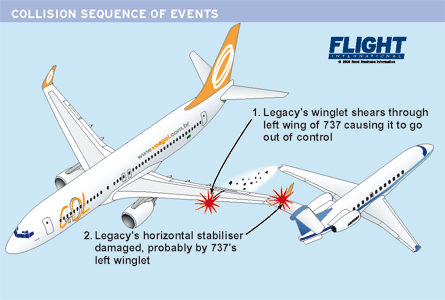Brazilian investigators are to release a final report into the Amazonian mid-air collision on 10 December, having disclosed little evidence of technical failure in collision-avoidance or air traffic control systems.
Crash investigation agency CENIPA will give its conclusions 27 months after the 29 September 2006 accident between a Gol Boeing 737-800 and an Embraer Legacy business jet. The aircraft collided at flight level 370 on an airway between Brasilia and Manaus, killing all 154 occupants of the 737.
Inquiries have focused on the loss of a transponder signal from the Legacy, which left its collision-avoidance system unable to provide prior warning, to either aircraft, of the impending conflict.
In a statement the Brazilian air force's brigadier Antonio Carlos Moretti Bermudez does not give any specific conclusions from the report - which will initially be shown to victims' relatives - but reiterates the main evidence from the inquiry.
 |
|---|
There were "no errors", he says, in the design or integration of the Legacy's communications equipment, transponder or collision-avoidance system.
But he adds that the Legacy's pilots maintain they did nothing intentional to deactivate the jet's transponder.
There is "no indication" of the accident's being influenced by radar coverage, deficiency of air traffic control communication or surveillance equipment.
"Certain rules and procedures were not properly followed which has led the commission to examine the reasons, with the intention of developing recommendations for flight safety," he adds.
Sixty safety recommendations had emerged from the inquiry, according to a previous statement which had accompanied submission of the draft final report to interested US and Canadian parties.
Source: Air Transport Intelligence news




















